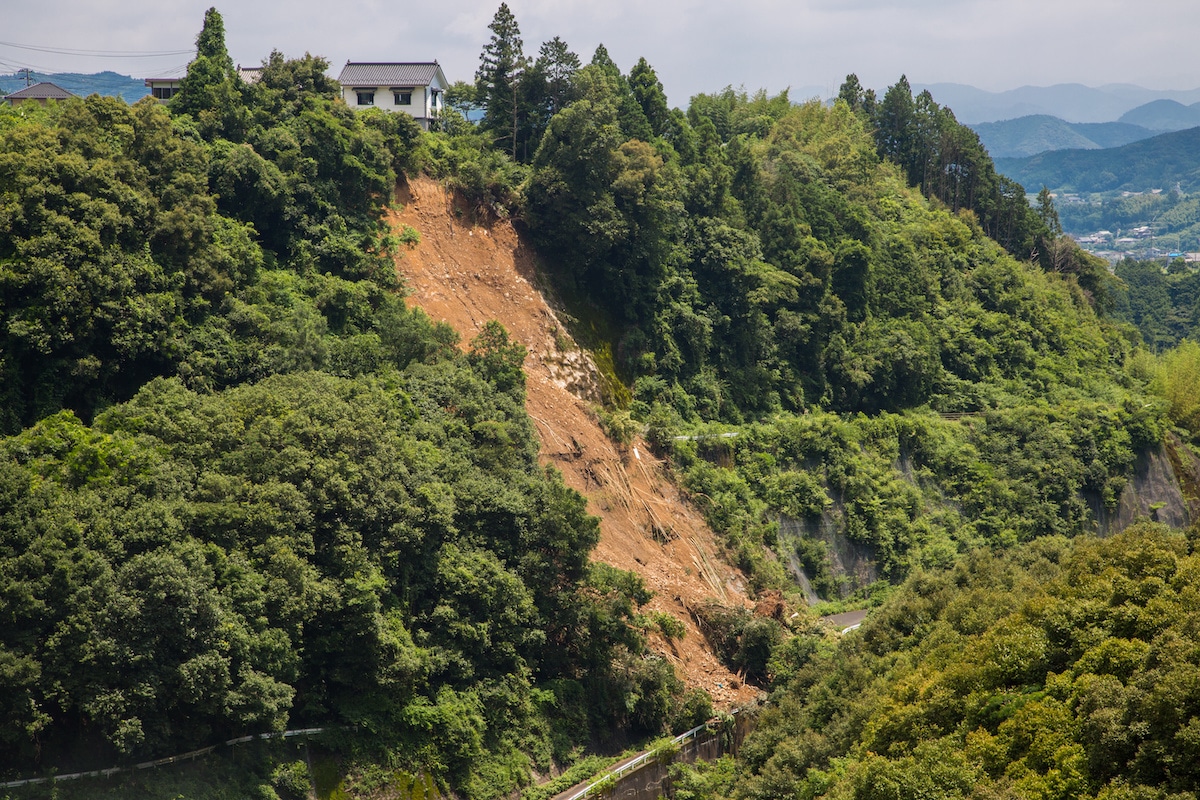As our distant ancestors knew, wood fires are very cool. Snuggling up to a sterile electric heater does not produce the right kind of nostalgia, and stories told under bright fluorescent light just don’t offer the same experience as a warm fire or wood burning camp stove.
What We'll Cover
That said, even after the millennia of human experience in gathering, preparing, and maintaining a store of firewood, the knowledge isn’t instinctual… nor is it as simple as it may seem.
In this article, we’ll go over the proven methods to get firewood for your camping fire pit or your tent stove. We’ll explain different ways to collect, treat, and store it properly for the best results.
Different Ways to Get Firewood For Camping
Gathering Firewood from Property
Gathering your own firewood from local sources is economical and, if you practice good stewardship, can be good for the natural environment, too. Building a campfire is a great way to get into the camping spirit and works great with cast iron skillets and camping cooking pots, as well as the all-important s’mores-making rituals with marshmallow roasting sticks over your campfire grill grate, campfire rotisseries, or campfire tripod. You can’t collect from just anywhere though.
“So,” you might be asking, “where can I find firewood near me?”
You have a few different options.
Collecting from Your Own Property
In most cases, you can trim and cut down trees that are on your own property, as well as branches that overhang onto your land. As long as you have permission, it’s generally okay to collect wood from private property.
This right may be restricted if your property is on conservation land, however, or if there is an official Tree Preservation Order in force. Also, you can’t cut down a tree that sits on your property line without getting permission from your neighbor.
Small trees can usually be felled without much trouble, but taking down a large tree can be dangerous to both life and property. As a practical matter, you have to make the call whether you’re skilled enough to take a specific tree down by yourself. Just remember to proceed with caution.
Collecting from Public Land
There are restrictions against gathering firewood from National Parks and Reserves, including land overseen by the Bureau of Land Management (BLM)—even if it’s dead and lying on the ground. Most national forests will allow the harvesting of trees for personal use, but you’ll have to get a Forest Service-issued permit first.
These official tags are issued by the relevant jurisdictions. The specific cost and guidelines vary, so you’ll have to contact the authorities that supervise the land you wish to gather from. Penalties for violation include fines and even seizure of your equipment.
Other areas that may prohibit gathering firewood without permission include land being re-vegetated, Wilderness Study sites, campgrounds and picnic spots, pipeline easements, and resort property.
Other Sources for Gathering Firewood
Visit Your Local Saw Mill
Another source for firewood is a saw mill. Wood slabs that cannot be sold are usually set aside—but the material makes fine firewood. It’s also much easier to harvest, since you are essentially just cutting it down to size and loading up.
If there’s a saw mill within traveling distance, contact the ownership to see if they’ll let you have the wood. Confirm it’s available to gather for free, because such wood is usually a nuisance, and most owners are happy to have it hauled away. In some instances, even if you aren’t able to acquire the firewood for free, you can get firewood for sale at a low cost because the saw mill needs to get rid of it.
Find Clean Pallets from Commercial Sources
Pallets can be great free sources of firewood, as long as they are “clean” or free from absorbed chemicals known to be harmful. The best way to know is to look for a coded stamp, which can tell you where a pallet came from and how it was treated.
The codes to look for include DB, which means safe and debarked, and HT, which means the wood was treated by raising the wood’s core temperature to about 140 degrees for a half hour. Another safe heat-treated code is KD, for Kiln-dried.
The code to avoid is MB, which means the wood has been treated with toxic Methyl Bromide.
Check with Local Tree Trimmers
Another source you might try for gathering firewood is a local tree trimmer. These companies acquire loads of tree wood in their normal operations, and will sometimes offer it for free. Some even deliver!
Check local phone listings or Craigslist—you may hit the free firewood jackpot and save yourself time, effort and money. The caveat with this method is that trimmers tend to offer all kinds and sizes of wood mixed together, including soft woods like pine or others filled with sap. You’ll have to sort it out.
How to Cut and Prepare Firewood
All you really need to cut firewood is a good axe, just like the pioneers. You can use a powered chainsaw, of course, if you have the experience and know what you’re doing. The process is basically the same with either tool.
How to Take Apart a Tree
Let’s assume we have already have a tree laid out ready to cut. We may have cut it down ourselves, found it, or dug out the roots and had a horse pull it over—whatever. Next…
Limbing – The first thing to do is remove the branches. Start at the lower end of the log and work toward the top. This can be more difficult than it seems: glancing blows and limbs under compression are common hazards, so be cautious.
Also: Only cut from the opposite side of the log, so the trunk separates you from your axe or saw. Some of the cuts will force you into an awkward position, too, so be careful!
Bucking – Once the log is trimmed, the next step is to buck it: cut it into smaller pieces for splitting. The resulting pieces are called bolts.
12 inches is a smaller recommended length, because bolts that size are lighter and make splitting easier. However, smaller bolts mean you need to buck more sections, which may be more difficult. Use your best judgement to decide the best way to buck every tree.
Log bucking can be as dangerous as felling a tree, but in a different way: you’re dealing with wood that could be under a great deal of compression stress. It can be hard to maneuver the log so it doesn’t bind while being cut.
Pro Tip: Even if you’re using a chainsaw, bring a wood axe along. If you bury it in the end of a trimmed trunk, and it becomes a handle you can use to rotate and maneuver the log.
Splitting – Here’s the part that brings out the Abe Lincoln in us. Splitting increases the wood’s surface area and helps it dry out faster, which results in a cleaner and more thorough burn. Full, intact logs season slowly and tend to smolder when burned.
As a practical matter, the best time to split is right after bucking the trunk. The tools are out, the logs are lined up, and you’ll avoid having to stack your stash twice.
You’ll want a separate axe with a greater angle than used for felling or bucking. Set the bolt upright, and try to find an existing crack to start with to make it easier. Avoid knots, which are extremely hard and can break the blade or cause a dangerous glancing recoil. And – PLEASE – have your footwear on when splitting wood. Whether you’re wearing sneakers or vegan hiking boots, anything is better than going barefoot.
The secret to keeping the axe from sticking is to twist the head as it enters the wood. You can also set a wedge up and hit it with a hammer, or use power tools, but exercise caution: it takes time to master the skill.
Let it Season
As we’ll explain further below, the wood will need time to dry out, a process called seasoning. If you aren’t ready to split or stack the wood yet, make sure it is out of the rain until you can come back to it.
Ideally the wood should off the ground and have a top cover. You can also store your firewood on an open-sided covered deck or similar structure.
How to Stack Firewood
Firewood is seasoned and stored in a specially constructed stack; please note this is not a haphazard affair. You don’t just throw the wood in a pile and leave it until winter … unless, maybe, it’s for pets who love hunting critters, or you have reptiles to feed with your wood’s future insect population.
If you’re serious about burning your own firewood, you need to know how to stack firewood in a carefully planned and maintained stack.
Stacking Techniques
Simple Stack Method
This is the stack we typically see here in the States, and it’s as simple as it gets. Just put down a dry barrier and lay out the bolts side-by-side, and keep stacking.
You don’t have to be exact, but it aids stability and appearance if you line the front edges up and use nicely uniform pieces on the first few rows.
If you don’t have a solid structure to stack against, you can use a crosspiece pattern to stable columns at each end. To do this a square area with a layer of bolts, and then place a row crossways, so they don’t just roll together. Continue this as high as you need.
Round Stack Method
This stacking method, called Holz Hausen, originates in Europe. It’s basically a round pile of logs, laid with ends out, surrounding an empty center that you pile your wood scraps into.
The method has several claims in its favor:
- Dries the wood better – The idea is that there is slightly more room between the outward facing pieces, and it does get rave reviews for through seasoning in less time.
- Saves space – Because you can keep piling the wood higher, you can stack more wood in a given space. Be aware there is a minimum size involved for making a round circle, whereas you can make a small, narrow simple stack just about anywhere.
- Stronger and more secure structurally – A properly made round stack gains strength from its wedge formation, so that it cannot easily topple over.
- More attractive – This is your call of course, but a well-made round stack is generally a bit tidier.
- Faster and easier – Just kidding, it takes longer. You have to learn how, plan it out, and transport the wood all around the circle.
How to Store Firewood
It starts with finding the right location…
Site your stack well! The wood will be here a long time, so think about your storage area and how it’s used in all seasons. Make sure it won’t limit needed access. To avoid encouraging termite problems, don’t plan to stack it against an existing structure.
You want a convenient location, so you can quickly fetch a piece from your doorstep in cold weather. Check your local fire and building codes for rules about woodpiles.
Here are other considerations:
- Drainage – Cut wood can easily rot from moisture and the bugs attracted to damp conditions. When stacking firewood, make sure the stack is sited away from low-lying areas prone to flooding, and elevate the ground layer on a firewood stand so any water it accumulates can quickly drain.
- Overhang or Covering – It is usually recommended that a firewood stack be covered, either by a tarp or plywood. This is a bit easier with a typical simple stack than with a round one. Don’t cover the sides, because trapped moisture will just be re-absorbed by the wood.
- Sunlight – While this is not crucial, expose your firewood to sunlight if possible. Wood stored in the shade will eventually dry, but it does take longer.
- Air Circulation – Leave some space between the stack and any structure surrounding it—including another stack.
What is Wood Seasoning?
If you’re cutting from a freshly felled live tree, the wood will be from 50% to 60% water. This “green” wood is hard to light, smolders sulkily, and doesn’t produce much heat—pretty much the worst of all worlds. It needs to dry out.
The main ingredient in seasoning green wood to firewood caliber (about 20% water) is time. Seasoning takes from six months to a year if it’s stacked; green logs sitting on the ground may well rot first.
Splitting is the main way to dry the wood out faster, and this step helps reduce insect infestations too. Sunlight and good airflow will speed up the process, too.
Safety Issues of Burning Green Wood
Green wood isn’t good for burning, because the water content makes the log sizzle and produce a lot of heavy smoke. Not only does unseasoned firewood give off less heat when burned, the escaping steam mixes in the smoke and coats your flue with a creosote compound and serves as a detriment to campfire safety. Nobody wants to have to escape a forest fire they accidentally started.
How to Tell if Your Firewood is Seasoned
Unless you prepared the wood yourself, it’s not always obvious if a piece of wood is properly dried. Here are ways to tell:
- Bark – The bark separates easily on well-dried wood. This doesn’t absolutely mean the underlying timber is fully seasoned, but it’s a good indicator.
- Cracks – As wood dries, it begins to form hairline cracks. Check the ends, and if it’s solid and whole, it probably needs more drying time.
- Color – Green wood has color which darkens or turns grey as it seasons.
- Weight – This is a pretty sure way, once you’ve gained some experience. Water is heavy, so green wood weighs more.
- Sound – Dry wood makes a higher-pitched knocking sound when you hit two pieces together. Green wood makes more of a thudding noise.
- Use a Moisture Meter – You can get a meter to read the moisture content of your wood, to give you an accurate measure. These are not expensive, and can be worthwhile if you’re seasoning a lot of wood.
Final Tips
Don’t Bring Firewood Long Distance
To avoid spreading disease and contaminating an area with foreign insects and spores, it’s important to source your firewood near its final burning destination. It’s recommended to never transport wood more than 50 miles for this reason—and keeping it under 10 miles is better.
The reason is that you can’t visually tell whether your wood is harboring insects or their eggs and larva, or if it carries microscopic bacteria, mold or fungi spores. If you must transport your wood for a long distance for something like camping, invest in certified firewood that has been heat-treated to eliminate contaminants.
Firewood is not Forever
Even properly seasoned wood will eventually decay, which makes it less efficient and harder to burn. Decay starts after four or five years, so keep track of when your wood was stacked and use it before Mother Nature does.
Conclusion
Wood burning with firewood and a fire starter is nothing new, no matter if you’re building a fire to heat your camping coffee pot or to serve dinner with your camping mess kit, but that doesn’t mean it’s a no-brainer. Each step of the process has its potential pitfalls, from legal gathering to felling the tree, and safe preparation through proper limbing, bucking, splitting, and, finally, stacking.
Follow up with proper siting and building of your stack, maintain it through the seasoning process, and protect it until you’re ready to use it. Burning firewood with an effective type of fire starter is efficient and economical… it’s a wonderful way to reconnect with nature and our history, while staying warm and cooking a delicious campfire dinner too.
The responses below are not provided, commissioned, reviewed, approved, or otherwise endorsed by any financial entity or advertiser. It is not the advertiser’s responsibility to ensure all posts and/or questions are answered.



![Best Archery Sets This 2023 [Men & Women]](/assets/images/8cf78150f1d9d7a0c175609145d21517.png)

